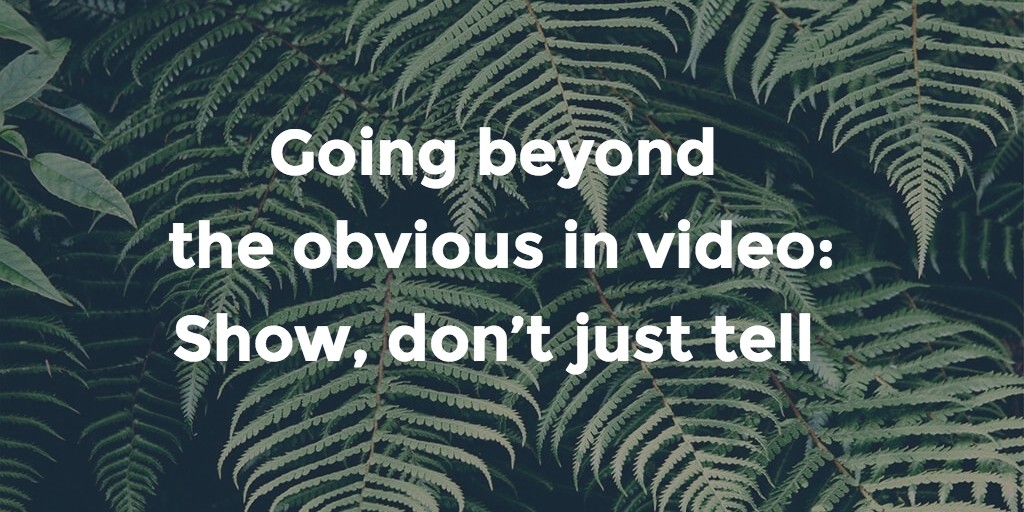Those TV news lessons are coming back to me, with the growth of video as a way for business professionals to be seen as thought leaders. And, I’m learning more from my friend and colleague Erick Nettel of Nettel Media, which helps organizations tell their story through video.
This “show, don’t tell” rule applies even in what might be considered the most extreme kind of talking-head production: the “explainer video”. An explainer is a way to tell prospective clients, “Here’s what we do and why we do it”. There’s one such video on the Thought Leadership Resources home page. It’s not Erick’s work, it’s mine, but I expect to get it replaced with an improved version by Nettel Media, soon.
Explainer videos that get the point across with a story
An explainer video, Erick says, is about more than describing expertise. It’s about showing the service along with the expertise.
In our conversation, I gave him the example of a geotechnical engineer who remediates contaminated soil (and yes, I know a lot of people who do this kind of work).
Imagine that engineer is you. Erick said it would be good to tell a story about a “brownfield” site you worked on, and start by demonstrating what it was like before you worked your magic. Maybe, there would be “before” images of stunted plants, dead cars, patchy soil and other signs of distress. While it would be good to have these as video, still images would work as well.
The video would then talk about (or better yet, to show) the steps that were taken to remediate the soil, and then show the “after” picture of the cleaned-up site. For more on case studies and how to use them, see blog post #33.
This kind of storytelling resonates with people, Erick said, because it humanizes the events. But it goes further because it helps the viewer – the potential client – to connect with you as the story-teller.
Part of that story involves presenting your professional credentials for doing the work you do. But more to the point, you need to talk about your personal background and how your work fits into that. As a soil remediation specialist, you might recount how you grew up with a love of gardening, and how you loved making an otherwise-dull back yard bloom. You can then say how you’ve continued to do this in your chosen career, and how this background helps you get good outcomes for the contaminated sites you help to remediate.
But what if you’re not comfortable on camera?
Not everyone feels comfortable with video, just as some people dread and loathe public speaking, and some folks find it hard to write.
I can totally relate to video as a source of fear and dark, dark feelings. Several years ago, I knew I had to get good at video, so I bought a camera, set it up on a tripod, and then tried delivering a script on-camera. It was a nightmare. I totally froze up, stumbled over my words, and it looked even worse than it seemed. I could barely get out two coherent sentences without having to pause. My early videos looked like an Edward Scissorhands production, there were so many cuts.
But I persisted, and got better. Now, the camera holds no fear for me at all. After doing a few practice runs, I can go through a three-minute or longer script on camera, with hardly a stumble.
You can do this too. Some people will likely find it easier to talk on camera, so you may find an easier learning curve than I do.
But many technical professionals are more comfortable behind a computer screen than in front of a video camera. If the problem isn’t too bad, and it’s something you can work on, I suggest you work on it to the point you can deliver with some fluency. There’s a lot to be said for letting potential clients see what you’re like as a person.
Being too polished probably isn’t a good thing for many business professionals anyway, Erick says – they may come across as insincere.
If you are truly uncomfortable on camera, however, Erick says, you may be better off relying on voice-over – in which you don’t appear on the screen at all, but just supply the audio track, and the images are photographs or other video footage. You can still come across as approachable and helpful, depending on the words you choose and the tone you project.
Testimonials from satisfied clients can also go a long way to getting your message across, without you having to appear on camera.
Just as a professional photographer can do a better portrait – or any other image – than most people using a camera, a professional videographer can get better results too. Some of this comes from better equipment, but it’s more about the technical know-how to use it – the lights, microphone, backdrop and other aspects of making a video better.
Video is becoming an increasingly important tool for showing potential clients that you’re someone they want to work with. It’s also becoming easier to use, and to make available. Even if you naturally incline away from video as a communication tool, it’s important to find a way – maybe outsourcing – to have a presence in this medium.


